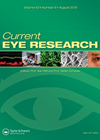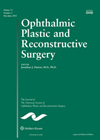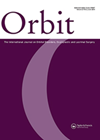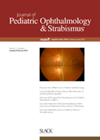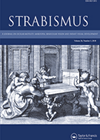Vital dyes in ophthalmology
This comprehensive review gives an excellent summary of the uses and properties of the different dyes available to aid better visualisation and diagnoses in ophthalmology. The authors clearly display the pharmacological properties, molecular details, osmolarity and indications in clinical ophthalmology...
Assessing the quality of scars from incisions made by a Colorado needle or a scalpel
Traditional teaching has held the best scars are achieved with cold steel although no previous study has formally investigated this hypothesis in oculoplastic surgery. This paper describes a non-randomised cross-sectional study comparing the scar quality achieved from cold steel with...
Does mitomycin C improve success rates in DCR surgery?
The authors present a meta-analysis of the use of mitomycin C (MMC) as an adjunct in dacrocystorhinostomy (DCR) surgery. Fifteen randomised control trials were included. There was a degree of heterogeneity in the surgical technique used, however, the MMC is...
Patient-reported outcomes in oculoplastic surgery
This is an important if somewhat difficult to grasp article which tries to formally address the subject of patient-reported outcomes in oculofacial surgery. The authors have conducted an extensive review of the literature searching for instruments (questionnaires) which have been...
Use of white coat and greetings
This study was undertaken to characterise the practice patterns of paediatric ophthalmologists regarding their use of white coats and salutations in outpatient visits. A questionnaire was sent to American Association for Pediatric Ophthalmology and Strabismus (AAPOS) members with a response...
Melphalon treatment of retinoblastoma
The purpose of this study was to report the authors’ experience with superselective ophthalmic artery infusion of Melphalon (SOAIM) for the treatment of five cases of unilateral sporadic retinoblastoma involving the macula. Standard therapy included a cycle of three infusions...
IR recession and prevention of lower lid retraction
The authors report the efficacy in preventing lower eyelid retraction and long-term results of a new technique of inferior rectus recession for vertical strabismus. The results for 35 patients were compared with 22 patients having conventional inferior rectus recession. Inferior...
Comparison of photoscreeners
The purpose of this study was to apply the GoCheckKids, iScreen, PlusoptiX and SPOT to young patients and developmentally challenged patients in a paediatric eye practice. One hundred and eight children were assessed with a mean age of 47 months...
LR/SR surgery for high myopia strabismus
The authors evaluated the outcomes of a surgical procedure involving the muscle union of the superior rectus and lateral rectus muscles with and without medial rectus recession and the anatomic changes before and after surgery in 35 eyes of 20...
Congenital aniridia clinical features
In this study the authors investigated the various ocular and systemic features associated with congenital aniridia in Indian eyes (262 eyes of 131 patients). The median age at time of first hospital visit was eight years (one day to 73...
Binocular training for amblyopia
The clinical effectiveness of binocular investigation for amblyopia was measured. The authors had previously unsuccessfully treated patients using occlusion and / or surgery. Patients were followed for an average of six months after cessation of treatment. The study included 22...
Brown’s syndrome surgery
Complications of surgery for Brown syndrome include under correction, extrusion of expanders and training for surgery. The authors introduced a procedure with minimal side-effects, accompanied by the application of the native tendon for superior oblique elongation. This was a prospective...


